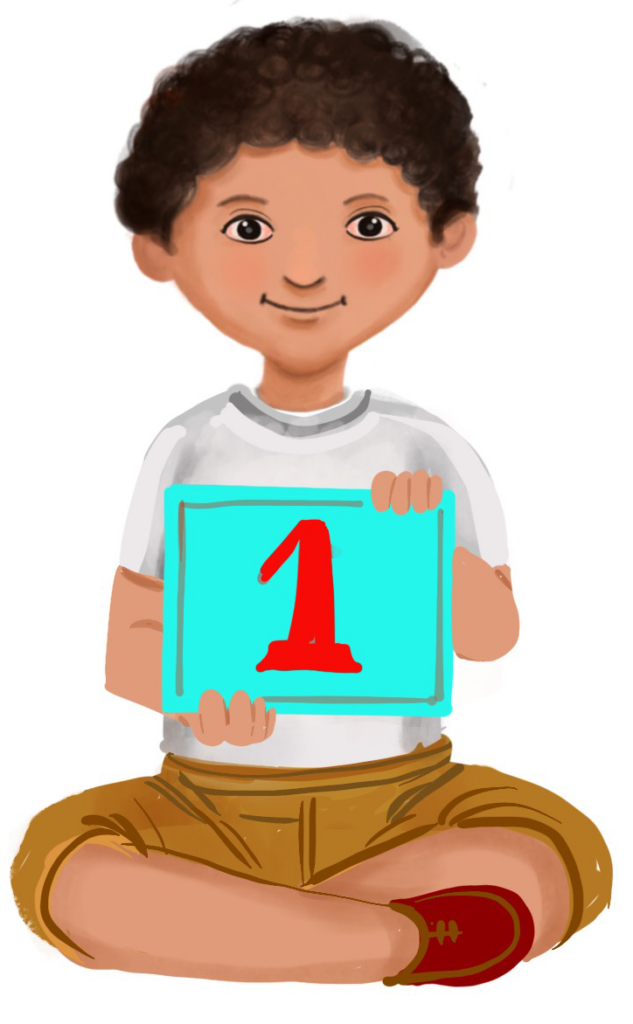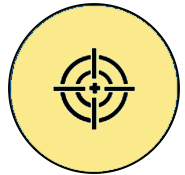
Fun with Shapes
Learning Outcome
Recognises, makes, and identifies 2D shapes by their names (e.g., square, rectangle, triangle, and circle) and matches objects around with shapes.
 Objective
Objective
Children will be able to observe and identify the shapes around them.
 Prerequisites
Prerequisites
- Children know basic vocabulary related to shapes. For example, a round ball, star, square box, cone ice cream, rectangular door, etc.
- The teacher can have a simple check for understanding at the beginning of the lesson by asking the children to identify the shape of a ball, a box of chalks, blackboard, etc.
Material required:
Flashcards: circle, triangle, rectangle, square, oval, and star
LTM: Printable flashcards – Shapes – Coming soon
Introduction
The teacher may start the class with a short discussion about shapes. Ask the children if they know the names of any shapes they have seen. Encourage them to share any experience they have had with shapes in their daily lives.
The teacher could begin with a story about shapes.
Story: The Shapes’ Day Out
Once upon a time in a colourful land called Wonderland, there were six best friends. Circle, Square, Triangle, Rectangle, Oval and Star. They loved going together, and on one sunny day they decided to explore their wonderland and see how shapes played a role in everyday objects and nature.
They started with excitement, and their first stop was the park. As they strolled through the colourful flower beds, Circle exclaimed,” Look! The flowers are round, just like me! They are shaped like circles.”
Triangle looked up at the sky and said, “Look at the sun; it looks like you too.”
Leaving the park, they came across a bustling marketplace. Triangle pointed at the colourful tents and said,” See those colourful flags! They are shaped like triangles! They flutter in the wind and make the marketplace so vibrant and colourful.
Then they entered a bakery. Rectangle’s eyes widened with delight. “Look at those delicious rectangular brownies, square cookies, and oval biscuits! Yummy!”
By evening they reached the beach to relax. Star jumped with joy as they approached the sand, “Look, friends! Shells! They have star shapes on them!” They collected the seashells.
After a long day of adventure, the friends came across a pond while returning home. As they looked at their reflections on the water’s surface, Circle spoke up. “We are all unique shapes, but we are also part of the same world. We make it beautiful and interesting.“
As the sun began to set, the friends made their way back home, their hearts filled with joy. Star exclaimed, “Look at the twinkling stars in the sky!”
The friends realised that shapes are everywhere, in objects and in nature, bringing beauty. They felt grateful to be a part of it.
 Note to the teacher:
Note to the teacher:
While narrating the story, the teacher could use flashcards when referring to shapes and picture cards when referring to objects.
The next day the teacher could ask the students to do a role play based on the story.
Video: The Shapes’ Day Out – Coming soon
ISL Video: The Shapes’ Day Out – Coming soon
Activity 1: Shapes Hunt
Objective: To identify the shapes.
Importance of the activity for children:
Helps in developing:
- Fine motor skills (Cutting with scissors)
- Gross motor skills (Jumping, hand eye coordination while measuring)
- Cognitive skills (Concentration, standing with the measured thread according to the distance covered)
- Social skills (Cooperation, waiting for the turn, playing together)
- Social skills (Playing together in a group)
- Emotional skills (Sense of achievement on completion builds self-esteem)
Resources required:
- Cut out of different shapes (Square, rectangle, triangle, circle, Star)
- Picture cards of objects
Flashcards: Cut-outs of Shapes – Coming soon
Flashcards: Picture cards – Coming soon
Setting for the activity:
The activity can be done indoors or outdoors depending on the availability of space.
Type of activity: Pair activity/Group activity
Preparation of activity:
The teacher should keep the picture cards ready. (Can be clock, table, tiffin box, books, pencil box)
Role of the teacher: Demonstrator and Facilitator
Procedure:
- Ask the children to pick any one cutout kept before them.
- Tell them to find the pictures with matching shapes. (Window, blackboard/whiteboard, clock, table, tiffin box, books, pencil box)
- Encourage them to identify and point out the shapes they see.
- Once they find the objects with the matching shapes, ask them to share their findings with others.
Observation:
The teacher can note down his or her observations and guide the students accordingly. For example, if the child is still confused in finding the matching objects, the teacher could help by showing the window and the shape. (Square/ rectangle)
Suggested variation in the activity:
- Various objects representing different shapes (circles, squares, triangles) can be placed on a table or floor.
- Ask the children to sort the objects by shape or call out the shapes one by one and let them search for that shape. (“Find something that is circle.”)
- Difficulty level can be increased by displaying more objects.
- Encourage the children to work together and discuss their choices while sorting the pictures/objects.
Conclusion:
Children would be able to observe and identify the shapes.
Video: Shape Hunt- Coming soon
ISL Video: Shape Hunt – Coming soon
Activity 2: Shape Art
Objective:
To create a collage or an image using shapes.
Importance of the activity for children:
Helps in developing:
- Fine motor skills (Measuring, writing)
- Gross motor skills (Maintaining posture while measuring, hand-eye coordination)
- Cognitive skills (Guessing, comparing, concentration, concept formation like “guessing, length & compare”)
- Social skills (Cooperation, playing together)
- Emotional skills (sense of achievement on completion builds self-esteem)
Resources required:
- Blank sheet of paper/chart
- Coloured construction paper
- Child friendly scissors
- Glue
- Play dough/Modelling clay
Setting for the activity:
The activity can be done indoors or outdoors depending on the availability of space.
Type of activity: Group activity/Individual activity
Preparation of activity:
The teacher may provide the necessary materials to the children. If there are more children, they could be divided into groups.
Role of the teacher: Demonstrator and Facilitator.
Procedure:
- Distribute the necessary materials to the children
- Demonstrate how to cut different shapes from coloured construction paper.
- Ask the children to prepare a collage/picture using the cut-outs.
- Encourage creativity and provide assistance as needed.
- Encourage them to describe the shapes they make and compare them to real life objects.
- Display the collage/picture inside the classroom.
Observation:
The students are made to observe the result of the activity as follows:
- The children may be asked to find out who has used more shapes in their collage/picture.
- The children may be asked to find out the different objects made with shapes.
- Depending upon the result, the teacher could modify the questions to be asked.
Suggested Variation in the activity:
- The teacher can use playdough/modelling clay instead of paper.
- The children could make different shapes using the playdough/modelling clay.
- Difficulty level can be increased by asking the children to create an object using only two shapes.
- Even craft sticks, ice cream sticks and straws could be used.
Observation:
Children would learn to cut/make various shapes and use them to create their own collage/model.
Home Activity
Objective:
To reinforce the concept of 2D shapes through a fun online activity.
Home Activity: Word Wall – Click on the right shape
Cross-Curricular Connection:
- In Art Class: Ask the children to draw different shapes and colour them.
- In Physical Education Class: The children can play hopscotch with shapes drawn on the ground.
- In Music Class: Practice songs that talk about shapes, and let the children dance while holding shape cutouts.
Assessment:
Assessment: Practice worksheet – Coming soon
Worksheet: Practice Worksheet (Enlarged) – Coming soon
Worksheet: Assessment Worksheet – Coming soon
Worksheet: Assessment Worksheet (Enlarged) – Coming soon
Check list for teacher:
| Activity | Yes | No | Sometimes |
| Children can: | |||
| Observe around them | |||
| Creatively use the shapes to create collages | |||
| Identify the shapes of objects around them | |||
| Make different shapes using clay dough | |||
| Focus on the activity | |||
| Complete the activity in the given time | |||
| Do the activity independently | |||
| Express verbally and through actions, expressions, or gestures |
Adaptations for addressing learner variability: Adaptations and strategies – Coming soon
Teacher Resource Document – Coming soon
| Source and Attribution of images: All images used in the above Assets and Aids are originally created. |
| This digital material has been developed by the Sri Sathya Sai Vidya Vahini Inclusive Education Project, a unit of Sri Sathya Sai Central Trust, Prasanthi Nilayam, as a collaborative offering in the service of our nation. |